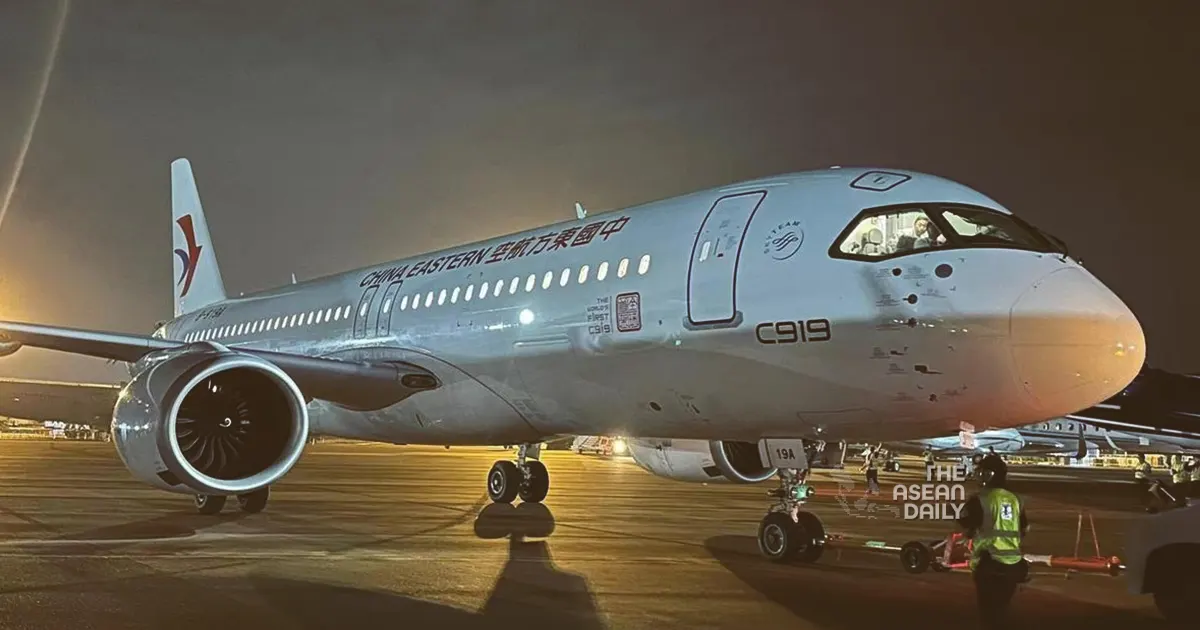18-2-2024 (SINGAPORE) After being grounded by the COVID-19 pandemic, the Singapore Airshow is set to take off once again with a resounding roar. In its ninth edition, running from February 20th to 25th, the event is expected to attract around 50,000 trade visitors during its first four days and more than 60,000 public visitors over the final weekend.
The 2018 edition, before the pandemic struck, drew nearly 80,000 public visitors, and this year’s show promises to be a spectacular comeback. Aviation enthusiasts will have their eyes fixed on the skies as pilots showcase their skills with military and commercial planes in highly anticipated flying displays. The 2024 edition will feature an unprecedented five foreign flying teams, the most in the air show’s history.
More than 1,000 companies from over 50 countries are set to participate, marking a return to 2018 levels. Experia Events, the organizer, confirmed that as of January 30th, around 590 exhibitors had been confirmed for the 2024 show, returning to pre-pandemic levels after a drop in 2020 and 2022.
While other air shows have surpassed the Singapore Airshow in scale, the full-fledged comeback of this event after a six-year hiatus is undoubtedly a cause for celebration. The last two editions were mere shadows of the show’s former bustling self, with reduced public tickets in 2020 and strict pandemic controls limiting the 2022 event to just four days, closed to public visitors.
Among the exhibitors set to captivate trade and public visitors alike is Chinese aircraft manufacturer Comac. Making its debut in Singapore, Comac will showcase its C919 single-aisle passenger jet, which will take to the skies as part of the flying display and be exhibited on the ground.

The C919 is China’s first homegrown commercial jet, built in an effort to loosen the Airbus-Boeing duopoly on the market. Pitched as an alternative to Boeing’s troubled 737 Max planes and Airbus’ A320neo jets, which face delivery delays, Comac sees the Singapore Airshow as an opportunity to garner attention.
“With the issues confronting Boeing and Airbus, Comac knows it has an opportunity through the Singapore Airshow to get more attention than it would otherwise have,” said independent aviation analyst Brendan Sobie of Sobie Aviation.
The long wait for Boeing or Airbus planes, as demand outstrips supply, is also not helping Comac’s competitors, according to Joshua Ng, director of Alton Aviation Consultancy. “Operators eyeing an Airbus A320 or Boeing 737 have to wait until the early 2030s to get one from the manufacturers.”
However, the C919 has yet to be certified by major Western regulators, and conversations about its viability as an option to augment fleets dominated by Western aircraft manufacturers are still in their early stages. Ng said the air show will be a good forum to start these discussions.
The quality of meetings and networking opportunities is a key factor for the success of any air show, particularly given the supply chain problems still plaguing the industry. “People are going to be talking to their existing suppliers and perhaps to potential new suppliers (at the Singapore Airshow),” said Greg Waldron, Asia managing editor at aviation publication FlightGlobal.
An air show’s significance also lies in its ability to attract the industry’s top players. Airbus, for instance, is fielding four of its top executives, including the chief executives of its commercial aircraft and defence and space businesses, chief sustainability officer, and chief technology officer. In contrast, Boeing’s entourage is more modest, with vice-presidents from its defence, space, and security division attending.
As air travel bounces back from its pandemic lows, the Singapore Airshow plays a crucial role as the leading aviation event in the Asia-Pacific region. The region commanded nearly 32% of the world’s air passenger market in 2023, underscoring the importance of the Singapore Airshow as a premier event in the region, according to Ng.
For air shows worldwide, success is often measured by visitor turnout and the volume and value of aircraft orders announced. In this respect, the Singapore Airshow has struggled to persuade regional airlines to announce orders, said Sobie. He cited the limited pool of airlines interested in announcing orders at the Singapore Airshow, as orders are typically made in the middle or at the end of the year.
In contrast, the Dubai Airshow in November 2023 announced more than $136 billion in deals. Since 2016, the Singapore Airshow has stopped revealing the volume and value of deals inked, as many exhibitors have kept these details confidential.
While the gap with the Dubai Airshow has widened in recent years, Sobie said the Singapore Airshow still occupies a niche as the leading show in Asia. Experia Events’ managing director, Leck Chet Lam, said the show’s success is measured not just by the volume of trade attendees but also by intangible factors, such as the quality of exhibitors and visitors, networking opportunities, idea exchange, and collaborations.
The air show also serves as a meeting place for aviation enthusiasts at a time when the industry is feverishly restoring capacity and in great need of staff. In Singapore, the authorities expect the air transport sector to fully rebuild its workforce in 2024, currently at more than 95% of pre-pandemic levels.
Ng said the air show’s role in bringing aviation closer to the community “helps to underscore the importance of aviation to Singapore and beyond, and will have a positive influence across all age groups in recognising aviation as a viable career.”
For aviation enthusiasts, the appeal of the air show comes down to access, the array of aircraft on display, and the chance to get up close with the jets.




